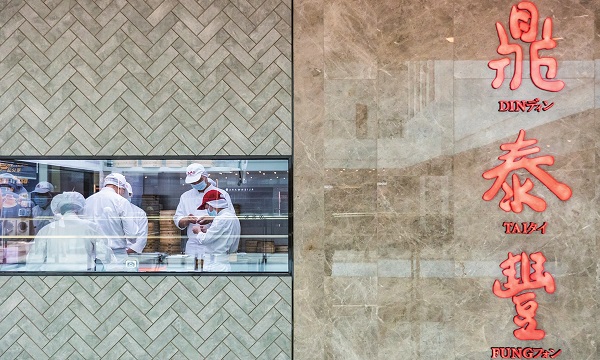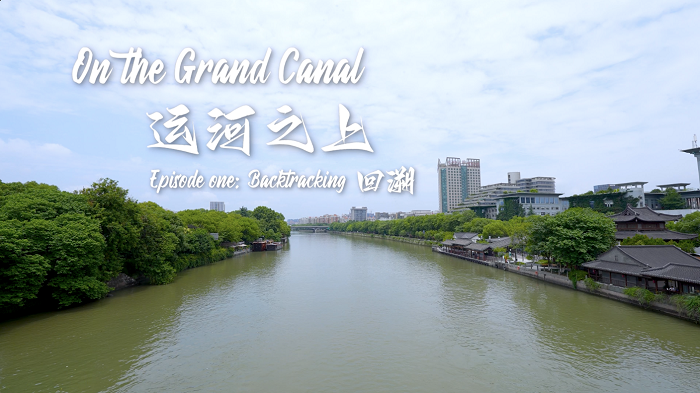xiaolongbao varieties nationwide offer diverse choices for diners

employees prepare steamed soup dumplings at a din tai fung restaurant in xuhui district, shanghai. photo: vcg
world-renowned chinese restaurant that specializes in soup dumplings and noodles, din tai fung, announced on august 26 that it would close 14 of its restaurants in the chinese mainland, including those in beijing, tianjin and xi'an, by october 31.
according to din tai fung, the closures are due to the expiration of the 20-year business license of its operator in the mainland.
mixed reactions
the news sparked mixed reactions on social media. some diners expressed regret, lamenting the loss of a reliable dining option where they could enjoy high-quality dishes such as the signature xiaolongbao, or steamed soup dumplings.
however, some other sentiments reflected dissatisfaction with the disproportionately high prices, less than ideal service, and perceived decline in value after the recent price hike.
in 1993, din tai fung, originally from taiwan island, was included in a new york times list of 10 "top notch tables" from around the world. the restaurant's standardized approach to chinese cuisine marked a turning point in its expansion strategy.
yang ji-hua, the founder's eldest son, introduced precise measurements into the kitchen. each soup dumpling was crafted according to exacting standards: a 5-gram dough ball, a 6.5-centimeter wrapper, and a 16-gram filling, folded into 18 pleats. this rigorous attention to detail became the hallmark of din tai fung.
following the same model, din tai fung expanded its brand to japan, singapore, south korea, australia, and the us.
in 2001, din tai fung opened its first location in the chinese mainland in shanghai, followed by its entry into the beijing market in 2004 .
however, as of now, many diners especially young people are not willing to pay for din tai fung's so-called high-quality dining experience anymore, unimpressed with its unchanging product and service on offer.
zhang yi, ceo of iimedia research, noted that the rapid development of social media in the chinese mainland, including apps like wechat, coupled with the fast pace of fashion and consumer trends, means that an unchanging product is clearly out of step with current consumer preferences for innovative dining experience.
"it's like rowing against the current; if you don't move forward, you fall behind. the competition in the chinese mainland market is fierce, and this positive competition has given rise to many new brands with unique characteristics," zhang said.
he noted that now, consumers have many new choices that are better in quality. "products similar to din tai fung's now face competition from innovative brands that have already established a market," he said.
exploring xiaolongbao treasures
while din tai fung is renowned for its xiaolongbao, china is home to many other well-known and delightful steamed soup dumplings. these include the kaifeng xiaolongbao from central china's henan province, the hangzhou xiaolongbao from east china's zhejiang province, and the wuxi xiaolongbao from east china's jiangsu province.
these regional varieties are not only more affordable but also offer unique tastes and textures that reflect their origins.
kaifeng, one of china's ancient capitals, is famous for its xiaolongbao, a dish that dates back to the northern song dynasty (960-1127).
with a history as rich as the city itself, kaifeng's version of steamed soup dumplings features thin, delicate wrappers encasing a variety of fillings, from pork to chicken and shrimps. the buns are known for their generous amount of savory soup inside, a hallmark of this regional specialty.
hangzhou, another historic city, offers a more refined take on steamed soup dumplings, influenced by the culinary traditions of the southern song dynasty (1127-1279).
hangzhou xiaolongbao is praised for its paper-thin skin and light, flavorful fillings. the buns are steamed to perfection, showcasing a balance between delicate textures and its signature fresh and aromatic broth.
xiaolongbao has a long history in hangzhou and its surrounding areas, and it is an indispensable part of the local diet. many restaurants and snack stalls offer this delicacy, making it a must-try for tourists wanting to experience the flavors of hangzhou. hangzhou xiaolongbao is not only a delicious snack but also an important representation of hangzhou's culinary culture, reflecting the refinement and attention to detail characteristic of people living in the south of the yangtze river.
in wuxi, xiaolongbao is celebrated for its unique sweet and savory flavor profile, a nod to the local palate. originating in the qing dynasty (1644-1911), wuxi xiaolongbao often includes a hint of sugar in the pork filling, creating a distinctive sweetness that complements the rich, savory soup. the filling of wuxi soup dumplings is generally made from fresh ingredients such as pork and shrimp. the meat filling is mixed with broth, and after steaming, the soup is formed inside the dumpling. when you bite into the dumpling, the soup flows out, creating a delicious taste. to enhance the flavor, seasonings like scallions and ginger are often added to the filling.
mastery in crafting the elastic dough and precise steaming techniques is key to achieving wuxi's signature taste.
there are many time-honored restaurants in wuxi that specialize in making and selling steamed soup dumplings today, making it one of the city's culinary landmarks. wuxi also hosts food festivals where the presence of xiaolongbao is one of the main attractions, drawing a large number of tourists and food enthusiasts.
these regional varieties of steamed soup dumplings not only represent the diverse culinary landscape of china but also highlight the deep cultural heritage embedded in these beloved dishes.
finally, each city's version offers a unique experience, making the exploration of these hidden gems a rewarding culinary adventure.
-
7th hangzhou international day kicks off
september 6, 2024
-
zhejiang olympians return to hangzhou, inspire students
september 4, 2024
-
hangzhou cyclist li zhangyu wins china's first gold at paris paralympics
august 30, 2024

